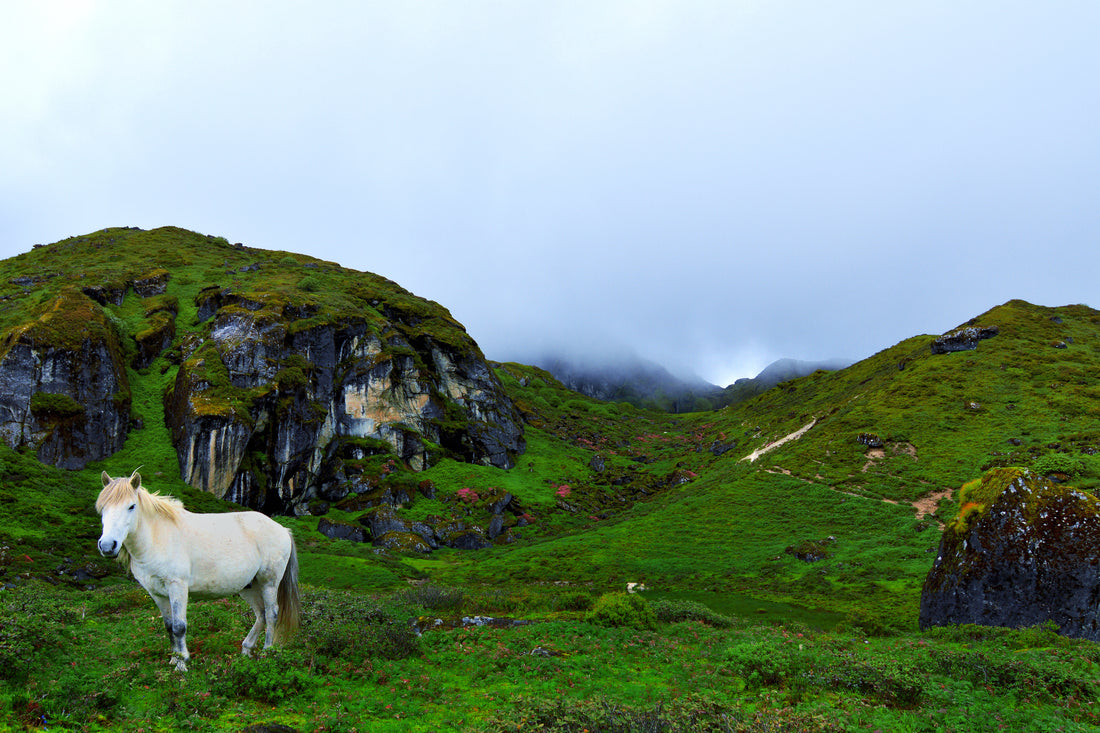It goes without saying that if you are traveling to a hill station and are visiting a high altitude, snowy region, warm clothes are a must. However, there are other items that you need to have with you while visiting North Sikkim.
Here are some of the most important things to carry:
Permits
If you are a foreigner, you must obtain an Inner Line Permit (ILP) to visit Sikkim. The same can be obtained from any Sikkim Tourism offices located in Delhi, Kolkata, Siliguri, or from Rangpo Tourist lodge which is located in Rangpo, the gateway to Sikkim. Having said that, there are also a couple of areas in North Sikkim like Gurudongmar Lake, where foreigners are not allowed to enter as these areas are located near international borders. If you are an Indian National, you will need special permits or even an Inner Line Permit/Restricted Area permit to enter some of the areas in North Sikkim like Chopta Valley and Tso Lhamu Lake. If you are visiting Gurudongmar lake, you can get a permit from the police check post that is located on the way to the lake. For those interested in trekking, visitors are required to obtain Protected Area Permit (PAP) at Gangtok.
In case the tourists are heading for Lachen or Lachung, the documents are checked at Toong Check post which is open till 4-5pm every day. Meanwhile the documents of tourists heading towards Nathula, Serithang, Kupuk, Zuluk, and Changu are checked in the 3rd mile check post that allows vehicle entry only till 10:30 – 11 am. (If the tourists are returning the same day)
First-aid Kit
When you are traveling to any new place, it is always best to keep a small box of first-aid kit with you in case of an emergency. Carrying a personal can of O2 HIMALAYA is a must especially when traveling to an area of high altitude. High-altitude-related illnesses are caused by Hypoxia (low oxygen) when travel is too high too fast and with too little time to get acclimatized.
So when Gangtok is at an altitude of 5410 ft while Gurudongmar and Nathula are at an altitude of 17,800 ft and 14,140 ft respectivel; it means that the elevation occurs at a rate of 8730ft in the case of a day’s trip to Nathula and 6195 ft in a 2-day trip to Gurudongmar. Whereas, the permissible elevation in a day according to CDC is a sleeping elevation no higher than 1,600 ft (500 m) per day, and an extra day for acclimatization every 3,300 ft (1,000 m).
Why hypoxia can be relatively dangerous is because when the brain starts receiving a lesser supply of oxygen and hypoxia begins to set in, people don’t realize it and are unaware of the decreasing oxygen level in their brain until it's too late.
Therefore, you need to take extra precaution. Apart from being sourced from pollutant free Himalayan mountains of Sikkim, O2 serves as an ideal first-aid, making it a must have. While the 9L can of 02 provides 2 minutes of continuous oxygen supply, it can be taken in periodical bursts during emergencies until the patient receives medical help.
Even if you are not prone to breathing difficulty or don’t have a medical history of cardiac disorders, O2 is a necessary travel companion in high altitude places because of the risks of hypoxia. In some cases, hypoxia can cause damage to multiple organs and lead to fatal complications. Another reason why hypoxia can be relatively dangerous is because when the brain starts receiving a lesser supply of oxygen and hypoxia begins to set in, people don’t realize it and are unaware of the decreasing oxygen level in their brain. Hence leading to a hazy and confused state of mind. For these reasons, carrying a can of O2 HIMALAYA is crucial.

